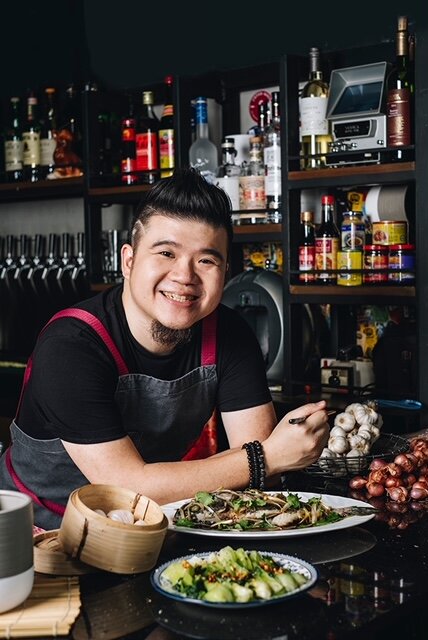Much Ado About Adobo
/Chicken Adobo (Source: Wikimedia Commons)
In a move that caught many by surprise, the Bureau of Philippine Standards of the Philippines’ Department of Trade and Industry (DTI) has set up a committee tasked with developing national standards for Filipino dishes like adobo to establish a “common ground” among businesses.
Other popular Filipino dishes the committee is looking to set standards for are sinigang, lechon, and sisig.
“There will be different approaches and opinions (on cooking Philippine adobo). As long as I have, say one to three steps, it’s this recipe. Anything else you add to it is a variation to the cooking technique,” chef Myrna Segismundo of the Food Writers Association of the Philippines said.
Ms. Segismundo is part of the committee developing the standards, along with representatives from restaurant and food industry groups, the Department of Science and Technology, and the National Commission for Culture and Arts.
Other members of the committee are chef Glenda Barretto of Via Mare, chef Raoul Roberto Goco from the Hotel and Restaurant Association of the Philippines, representatives from the University of the Philippines Diliman – College of Home Economics, Philippine Chamber of Food Manufacturers, Inc., Philippine Association of Meat Processors, Inc., Philippine Association of Food Technologists, Inc., LTB Chefs Association, Asia Society Philippines, and the Philippine Daily Inquirer which has had a long-running column on adobo recipes in its lifestyle pages.
“Standardizing the basic cooking technique for Philippine adobo will help ordinary citizens, foodies, and food businesses determine and maintain the authentic Filipino adobo taste,” the DTI said.
Reaction from top Filipino chefs and food experts was quick.
Among the first to react was Amy Besa, who with her husband Romy Dorotan, owns Purple Yam, a Filipino restaurant in Brooklyn. The couple also authored the acclaimed book, Memories of Philippine Kitchens.
Amy Besa and Romy Dorotan’s Memories of Philippine Kitchens
“First of all, anybody who thinks he or she is ‘qualified’ to be the ultimate authority on the food is automatically disqualified due to hubris and delusion of grandeur,” Besa said.
She added that telling Pinoys how to cook and eat their comfort food is bound to be as successful as herding cats.
“It’s not like there are no Filipino cookbooks available and the government and some ‘experts’ have to step in not just to teach but to CODIFY our culinary heritage. This brings to mind all those cookbooks from Enriqueta David Perez, Maria Orosa, Nora Daza, Gilda Cordero-Fernando, etc. They will always be the best source material along with our families.”
“The question is WHO owns our food ways? We all do. The best way to preserve our food is when families pass down their heritage recipes to the next generation. The operative word is SHARING recipes to show the depth and richness of our culinary heritage. To standardize and codify means to EXCLUDE infinite ways of reimagining our food. INCLUSION and EMBRACING regional differences should be the spirit in which we learn about our food."
Sharwin Tee, is a chef, restaurant consultant and author of So You Want to be a Chef? and The Gospel of Food. He is also a columnist for The Philippine Star and host of the TV show, “Let’s Do Lunch” on GMA Channel 7. He says:
Chef Sharwin Tee
“You know, instead of standardizing adobo, why won’t the government create more awareness for Filipinos who make and sell heritage food? What our cuisine needs is more stories told, not restrictions on how to make it.”
“Standardization is for restaurants for consistency but imposing a ‘standard’ recipe on any dish is detrimental to a culture. By imposing a ‘standard’ version you imply there’s a singular method to doing things, disregard millions of opinions, and doom a cuisine to its death.”
“Filipino dishes are defined by procedure not ingredients. It allows for ingredient substitutions because we’re historically an agricultural country reliant on seasons & weather.”
The DTI announcement hit a nerve with a Quezon City couple who both are passionate about cooking up Filipino recipes week after week in their home and sharing them with their foodie network.
Bett and Pikes Salvador first thought it was fake news. “When we realized that it wasn’t, we were amused, to say the least. It’s a total waste of time trying to ‘develop standards for cooking adobo’ … to come up with recipes that will be promoted outside the country.”
Bett Salvador
“Our opinion is that it would be better for DTI to promote the diversity in Filipino food and not being myopic about trying to ‘create standards.’ Better yet, DTI should focus more on how to help local entrepreneurs recover from loss due to the pandemic or promoting local business internationally. Stop trying to rationalize this nonsense project!"
Pikes Salvador
The proposed national standards also elicited many funny posts on social media.
One netizen suggested DTI should also set a standard on how many grains of rice constitute a kilo, or how many leaves of laurel (dried bay leaf) should be included in adobo recipes. Another asked if DTI will set a required ratio between fat and lean meat when cooking pork adobo.
An unknown cartoonist also made known his sentiment about the proposed adobo standards:
There were also those who favored the initiative, like Ige Ramos who studied Fundamentals of Culinary Art at the International School for Culinary Arts and Hotel Management. In a Facebook comment, he said:
“The privileged ones learned how to cook from their lolas, mothers, kusineras and other family members, but we have to understand that not all families are the same. Not everyone is born in a nice home with functioning kitchens, where they can cook, enjoy Sunday lunches, and convivial dinners; share family recipes, and pass it on to the next generation.”
Ige Ramos
“It’s not just about poverty, but a lack of knowledge in nutrition and food. The key word here is standards, and by standards, it means quality of the ingredients and measurements. Measuring is an essential element so a dish can be replicated. It is an important element in sharing transferable concept such as heirloom recipes, or any recipe for that matter. If people are taught the proper way to make any dish without resorting to packet mixes, but by using basic ingredients, maybe then, the quality of life will be better and at the same time, these dishes will be safely preserved and continue to thrive and evolve. There should be a healthy debate regarding this issue. Not just dismissing the activity as pointless and stupid.”
Realizing the controversy of the initiative, DTI was quick to issue a rejoinder, as seen in this infographics:
The debate is sure to continue for a long time, and so will the simmering of adobo in Filipino kitchens.
How do you like your adobo? For now, you set your own standards.
Rene Astudillo is a writer, book author and blogger and has recently retired from more than two decades of nonprofit community work in the Bay Area. He spends his time between California and the Philippines.
More articles from Rene Astudillo











